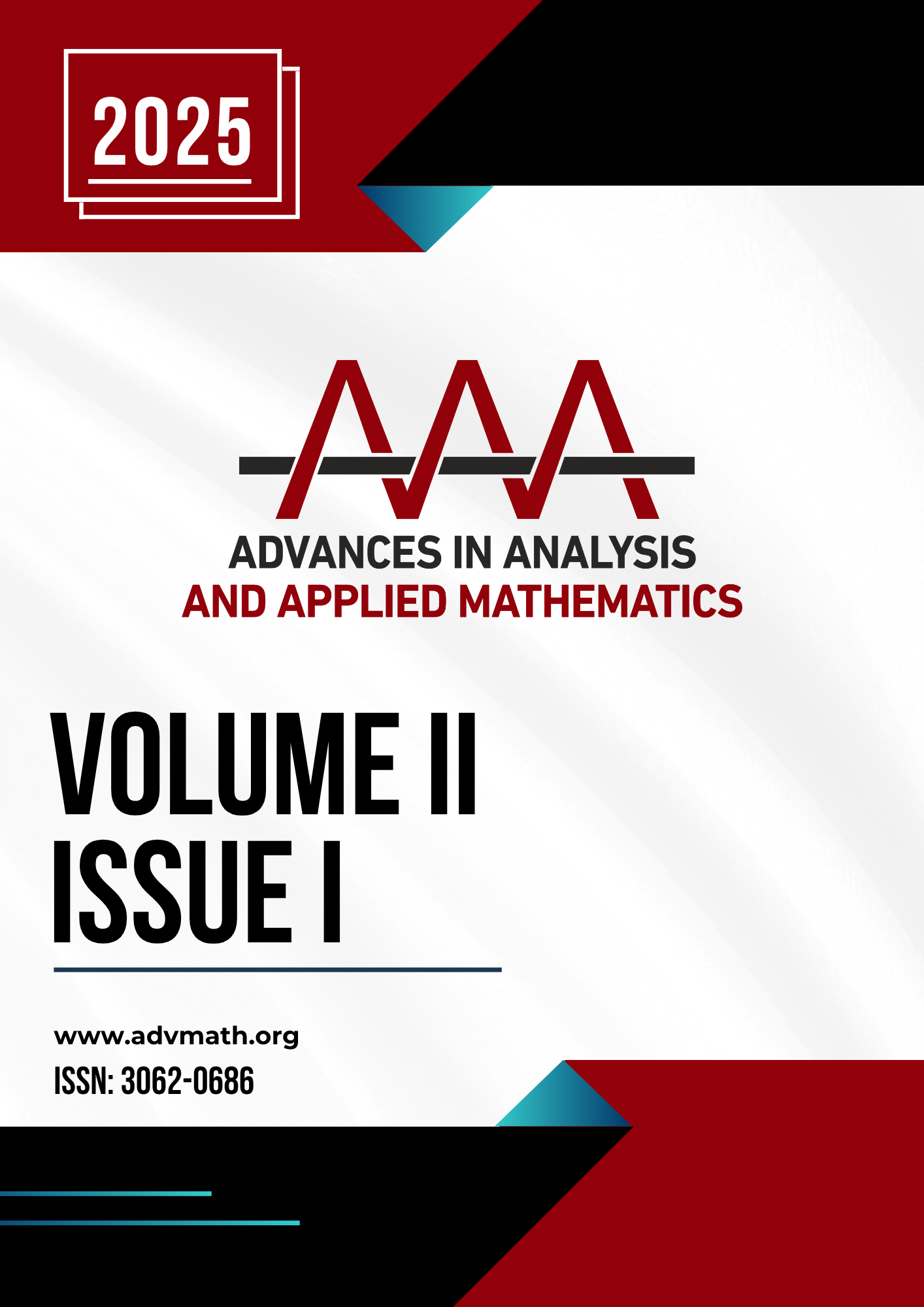Secure Image Transmission Using Fractional Variable Order Memristive Hyperchaotic System With Nonlinear Synchronization
DOI:
https://doi.org/10.62298/advmath.30Keywords:
Fractional variable-order system, Memristive hyperchaos, Secure communication, Image encryption, Synchronization, Nonlinear controlAbstract
This work presents a secure image transmission method based on a newly developed fractional variable-order memristive hyperchaotic system. A nonlinear feedback controller is designed to achieve fast and accurate synchronization between the transmitter and receiver systems. We use the synchronized output to generate a chaotic key stream for grayscale image encryption and decryption. The proposed approach is evaluated through simulations that confirm precise synchronization, strong key sensitivity, and successful image recovery. Quantitative metrics such as PSNR above 48 dB and correlation coefficients near 1.0000 validate the method's robustness and effectiveness. Compared to conventional chaos-based schemes, this model offers improved flexibility, higher complexity, and stronger resistance against cryptographic attacks, making it suitable for lightweight and secure communication systems.
References
[1] A. Vikram and V. Galitski, Dynamical quantum ergodicity from energy level statistics, Phys. Rev. Res., 5(3) (2023), 033126. [CrossRef] [Scopus] [Web of Science]
[2] C.Y. Nie, H.X. Sun and X. Wang, Analysis of performance about secure communication based on fourth-order hyperchaotic system, 2nd Int. Conf. on Computer Science and Electronics Engineering (ICCSEE 2013), March (2013), Sanya, China, 556–559. [CrossRef]
[3] K. Suneja, S. Dua and M. Dua, A review of chaos based image encryption, 3rd Int. Conf. on Computing Methodologies and Communication (ICCMC), March (2019), Erode, India, 693–698. [CrossRef] [Scopus] [Web of Science]
[4] K.F. Romero, M.C. Nemes, J.P. de Faria and A.F.R. de Toledo Piza, Sensitivity to initial conditions in quantum dynamics: an analytical semiclassical expansion, Phys. Lett. A, 327(2–3) (2004), 129–137. [CrossRef] [Scopus] [Web of Science]
[5] D. Lambić and M. Nikolić, New pseudo-random number generator based on improved discrete-space chaotic map, Filomat, 33(8) (2019), 2257–2268. [CrossRef] [Scopus] [Web of Science]
[6] L. Qiu, S. Li, T. Xiong, L. Wang and Z. Ding, Analysis and circuit implementation of fractional-order memristive hyperchaotic system with enhanced memory, Phys. Scr., 100(2) (2025), 025212. [CrossRef] [Scopus] [Web of Science]
[7] S. Yu, W. Chen and H.V. Poor, Real-time monitoring of chaotic systems with known dynamical equations, IEEE Trans. Signal Process., 72 (2024), 1251–1268. [CrossRef] [Scopus] [Web of Science]
[8] R. Allogmany, N.A. Almuallem, R.D. Alsemiry and M.A. Abdoon, Exploring chaos in fractional order systems: a study of constant and variable-order dynamics, Symmetry, 17(4) (2025), 605. [CrossRef] [Scopus] [Web of Science]
[9] H. Kiskinov, M. Milev, M. Petkova and A. Zahariev, Variable-order fractional linear systems with distributed delays—existence, uniqueness and integral representation of the solutions, Fractal Fract., 8(3) (2024), 156. [CrossRef] [Scopus] [Web of Science]
[10] S. Al Fahel, D. Baleanu, Q.M. Al-Mdallal and K.M. Saad, Quadratic and cubic logistic models involving Caputo–Fabrizio operator, Eur. Phys. J. Spec. Top., 232(14-15) (2023), 2351–2355. [CrossRef] [Scopus] [Web of Science]
[11] D. Ghosh, N. Marwan, M. Small, C. Zhou, J. Heitzig, A. Koseska, P. Ji and I.Z. Kiss, Recent achievements in nonlinear dynamics, synchronization, and networks, Chaos, 34(10) (2024). [CrossRef] [Scopus] [Web of Science]
[12] B. Zhang and L. Liu, Chaos-based image encryption: review, application, and challenges, Mathematics, 11(11) (2023), 2585. [CrossRef] [Scopus] [Web of Science]
[13] S. Shaukat, A. Ali, A. Eleyan, S.A. Shah and J. Ahmad, Chaos theory and its application: an essential framework for image encryption, Chaos Theory Appl., 2(1) (2020), 17–22. [Scopus]
[14] S. Pankaj and M. Dua, Chaos based medical image encryption techniques: a comprehensive review and analysis, Inf. Secur. J. Glob. Perspect., 33(3) (2024), 332–358. [CrossRef] [Scopus] [Web of Science]
[15] D. Tavares, R. Almeida and D.F. Torres, Caputo derivatives of fractional variable order: numerical approximations, Commun. Nonlinear Sci. Numer. Simul., 35 (2016), 69–87. [CrossRef] [Scopus] [Web of Science]
Downloads
Published
How to Cite
Issue
Section
License
Copyright (c) 2025 Shah Sawar, Sadam Hussain, Muhammad Ayaz

This work is licensed under a Creative Commons Attribution-NonCommercial 4.0 International License.






